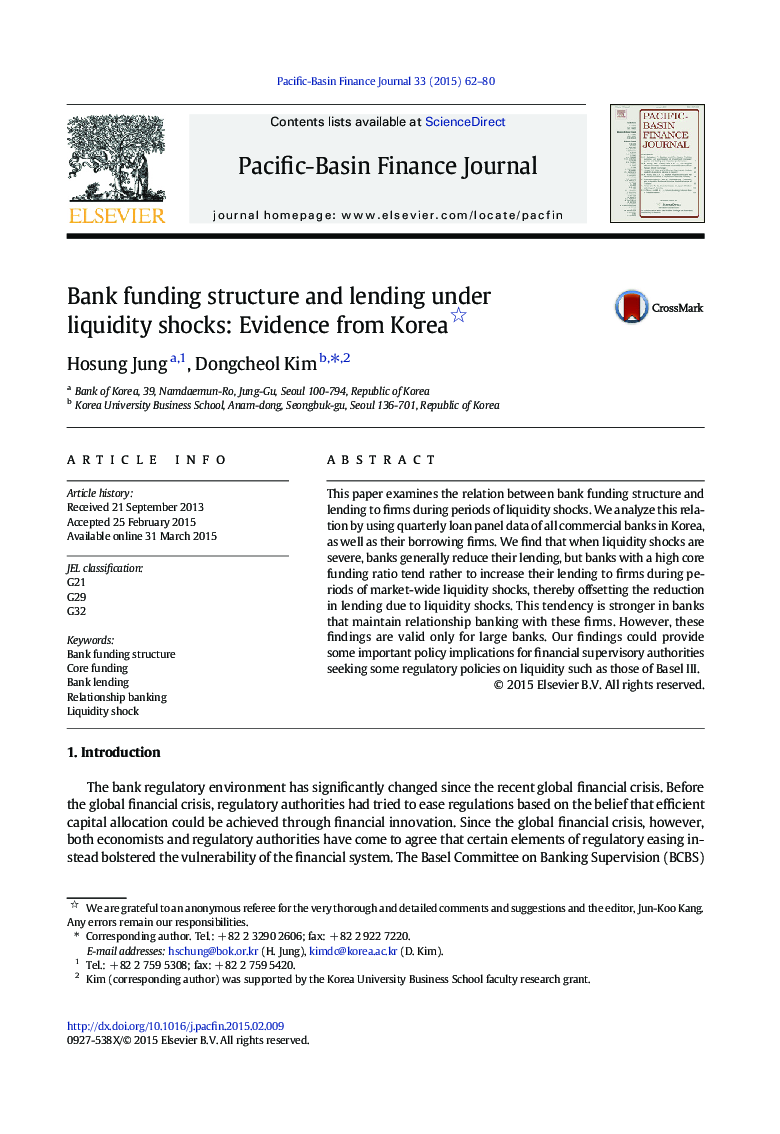| Article ID | Journal | Published Year | Pages | File Type |
|---|---|---|---|---|
| 973067 | Pacific-Basin Finance Journal | 2015 | 19 Pages |
•We examine the relation between bank funding structure and lending to firms.•How is this relation affected by market liquidity shocks in Korea?•This study is the first to use the panel data of both banks and borrowing firms.•Banks generally reduce their lending during periods of severe liquidity shocks.•However, banks with a high core funding ratio tend rather to increase their lending.
This paper examines the relation between bank funding structure and lending to firms during periods of liquidity shocks. We analyze this relation by using quarterly loan panel data of all commercial banks in Korea, as well as their borrowing firms. We find that when liquidity shocks are severe, banks generally reduce their lending, but banks with a high core funding ratio tend rather to increase their lending to firms during periods of market-wide liquidity shocks, thereby offsetting the reduction in lending due to liquidity shocks. This tendency is stronger in banks that maintain relationship banking with these firms. However, these findings are valid only for large banks. Our findings could provide some important policy implications for financial supervisory authorities seeking some regulatory policies on liquidity such as those of Basel III.
